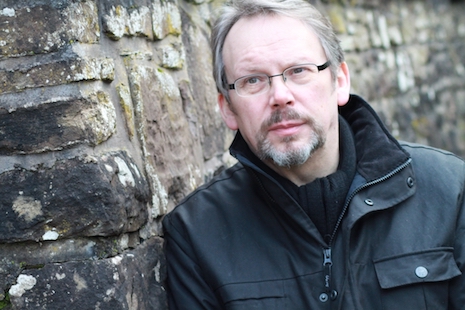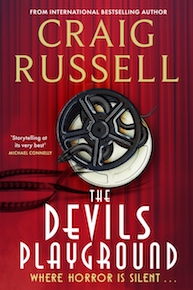Closer than you think. Looking at the 1920s from the 2020s.

I love being a writer. You get to earn your living from pretending—a bizarre form of psychological dressing-up, where you shed your own experience and put on someone else’s for a while. Almost to the point of a personality disorder, I love living another life in another place, immersing myself in a completely different time and context. Every time I write a novel, I like to think I come out of it changed, with a different perspective. At the very least I’ve learned something new.
I write about places, periods and people that interest me. That doesn’t always mean coming from a position of expertise—no matter how much you think you know about a time and place, digging deep with your research will always reveal things you didn’t know. I have to admit to being a cinephile, and having a deep personal interest in the interwar years, so I came at The Devil’s Playground from a position of affection and a fair degree of knowledge of 1920s Hollywood. What I didn’t expect was to find that it was a time, and an experience, very like what we’re going through right now as a society. And where there were differences, they were as surprising as they were profound.
As I researched and wrote The Devil’s Playground, I found myself in a world recovering from a major pandemic, a creative industry bracing for the seismic impact of new technologies, and a society undergoing radical changes.
The weird thing is that, from our perspective, the 1920s don’t feel like 100 years ago, and I had to drill down into that fact to get my bearings in a disconcertingly familiar landscape. The reason for this seeming lack of distance is simple: the modern world, the world we know today, was born then. The things that shape our lives today were created in the 1920s. Some of these innovations are obvious: the telephone and the mass-produced automobile, for example, but the biggest changes are ones we don’t often think about today. Shiny new technologies emerged in the 1920s that were so radical they changed everything, particularly popular culture—and we still use these technologies, albeit in vastly improved forms today.
The one that had the biggest impact, and which casts a huge shadow in The Devil’s Playground, was the microphone.
The microphone created the popular culture we know today—with it came radio, spoken-word newsreels, then talkie movies and, ultimately, television. But its impact on our world today is much more subtle. Pop music, as we know it today, was born; the sub-operatic projection of vaudeville and music hall singers gave way to the more intimate tones of the crooner. The age of modern news was born with Fox Movietone newsreels where cinema audiences heard the voice of their president for the first time.
A lot of people believe that sound recording had come along in 1927 and brought the Silent Movie Era to an abrupt and unseen end—that was far from the case. The capability to make sound movies had been around for more than a decade, but studios had resisted sound because it was actually commercially a bad move: silent movies, because there was no spoken dialogue, were truly international and that meant the fame of their stars ignored language barriers or national frontiers. Movies made in Hollywood weren’t regarded as American, but global. And that leads to another fact about 1920s Hollywood that is difficult to grasp today: just how massive stardom was in the 20s. There is no movie star today who has anything like the worldwide adoration that silent movie stars attracted. A greater scale of magnitude, even, than Beatlemania in the 60s. When Douglas Fairbanks and Mary Pickford visited London in 1926, their car was mobbed by masses of fans who dragged them from their limousine, causing both physical bruising and shock. Hollywood’s golden couple had to be ignominiously hoisted onto the shoulders of policemen and carried to safety when the thousands-strong crowd threatened to crush them. Even in Moscow, in the newly formed USSR, Hollywood’s golden couple were swamped with a crowd of over two hundred thousand. When Rudy Valentino died, one hundred thousand fans lined the streets for his funeral, and adoring female fans took their own lives.
Much of the inspiration for The Devil’s Playground lay in the size and power of Golden Age stardom. Fame in 1920s Hollywood was massive, with an equally huge cash value to studios. And that meant it had to be protected. And the guardians were the studio fixers, like the novel’s Mary Rourke. Any scandal was covered-up before it could tarnish a star’s image. That meant studios, through their fixers, made sure they had police and media in their pocket. And there were scandals—from the Fatty Arbuckle rape case to Thomas Ince’s death on Randolph Hearst’s yacht, from William Desmond Taylor’s murder (the police arrived at the murder scene to find studio execs burning confidential papers) to Charlie Chaplin’s involvement with underage girls, there was much to “fix”.
But there were many unexpected discoveries waiting for me as I explored 1920s Hollywood. Tinseltown was a unique place, isolated and insulated from the less glamorous existence of the majority of Americans. It had its own mores, its own codes, and its own freedoms. It is difficult to accept that women and people of colour were infinitely better represented in the Hollywood of the 1920s than of the 2020s. Women worked in all aspects of filmmaking, in front and behind the camera. In fact, some of the most powerful people in Hollywood were women. African Americans, too, made challenging social dramas through studios such as the Lincoln Motion Picture Company—albeit in the shadow of D.W. Griffith’s noxiously racist epic Birth of a Nation.
Writing The Devil’s Playground—and the research into it—brought a unique time and place into sharp focus for me. It also made some of the great stars of the period more human—and brought the world of a century ago a lot closer than I thought.

THE DEVIL'S PLAYGROUND
Constable, Hbk £20.00
08 June, 2023
Read SHOTS' Review Here